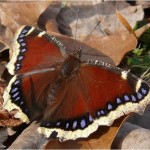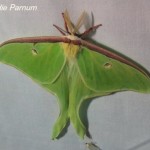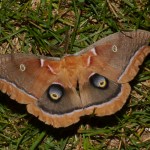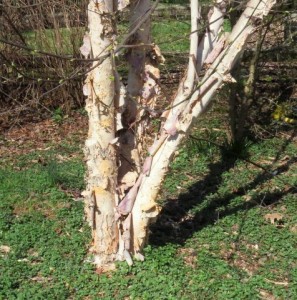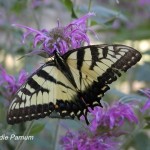By Edie Parnum
Each year we select two native plant species with exceptional ability to support wildlife. These plants will contribute significantly to the web of life in your yard. They host insects, offer nectar and pollen, and produce fruits, seeds, or nuts. Birds, butterflies, and other insects and animals will feed and prosper. The Prime Plants will provide shelter and nesting places, too. Our selections, all native to southeastern Pennsylvania, are easy to grow and will make attractive additions to your landscape. They are readily available at native plant nurseries or native plant sales. We offer awards in two categories: Trees and Shrubs and Perennials.
Our selections for the 2015 Prime Plants for Nature Awards are:
River Birch, Betula nigra
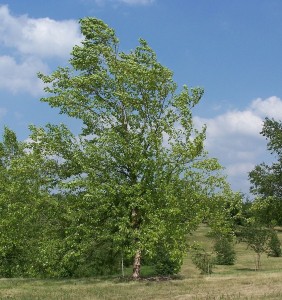
River Birch (Betula nigra) is an attractive medium-sized tree. Wikimedia image – Minnesota Landscape Arboretum. Click to enlarge.
Wildlife Value: This medium-sized deciduous tree has exceptional wildlife value. According to Doug Tallamy, author of Bringing Nature Home: How You Can Sustain Wildlife with Native Plants, it hosts 411 species of moths and butterflies whose caterpillars eat the foliage. The caterpillars include butterflies such as Mourning Cloak and moths including Luna, Io, Polyphemus, and Cecropia.
Birds in turn feed on these caterpillars, especially during spring migration and the summer breeding season. In the fall and winter, House Finch, American Goldfinch, Pine Siskin, and other birds eat the birch seeds. Woodpeckers, White-breasted Nuthatch, and others search the loose bark for insects and
spiders. The tree offers shelter and nesting places for birds as well.
Growing Conditions: River Birch is a long-lived tree that grows in a variety of conditions. It thrives in moist soil but will tolerate moderately dry soil, too. Plant it in light shade to sun.
Appearance: This deciduous tree is an attractive and graceful medium-sized tree. It grows quickly (1.5 to 3 feet per year) and reaches 75 feet at maturity. The exfoliating bark offers visual interest in all seasons.
Wild Bergamot, Monarda fistulosa
Wildlife Value: This lovely perennial is a magnet for pollinators. The flowers produce
copious nectar and pollen, so butterflies, bees, wasps, flies, and even hummingbirds love it. Because it blooms for many weeks with new flowers emerging continuously, it can host thousands of visits by pollinators each season. By growing Wild
Bergamot in your yard, you can introduce children to pollination and teach them not to be afraid of bees and wasps.
Growing Conditions: Wild Bergamot is a trouble-free perennial that grows in sun or part shade in soil that ranges from moist to dry. It spreads underground by root-like rhizomes. If the plant gets oversized, the rhizomes are easy to pull up. Or, you can dig out clumpsand plant them elsewhere in your garden or give them to
other gardeners. If mildew is troublesome, give it extra room for air circulation. A member of the mint family, it is highly deer resistant.
Appearance: The summer flowers range from lavender to pink. The plant grows 3-4 feet high and spreads to 24-36 inches wide.

The closely related Scarlet Beebalm (Monarda didyma) attracts hummingbirds and other pollinators, too. © Edie Parnum. Click to enlarge.

